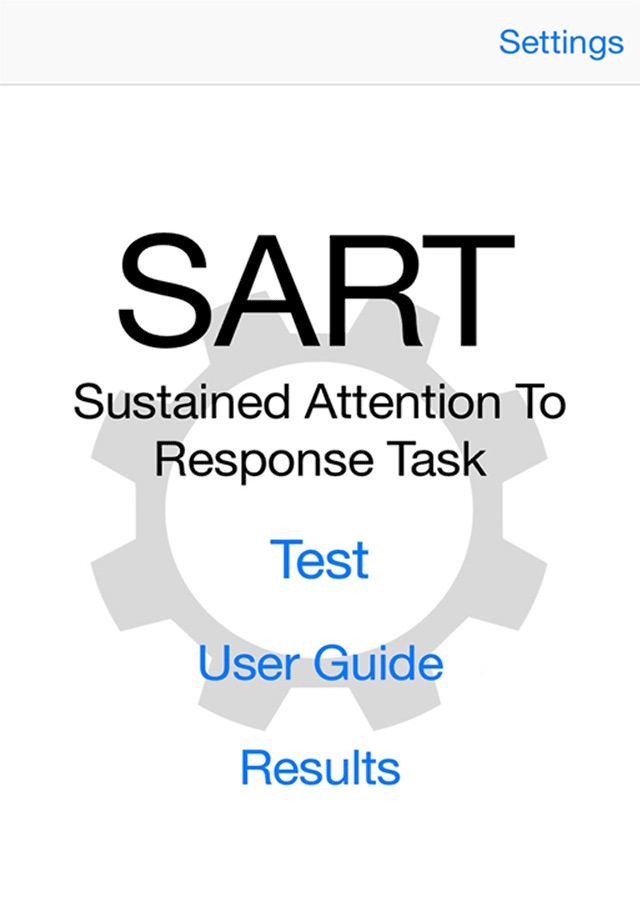
SART: Sustained Attention to Response Task app for iPhone and iPad
Developer: Bernardino Ochoa
First release : 21 Nov 2014
App size: 924 Kb
Finally, the classic sustained attention test developed by Robertson et al (1997) is at the fingertips of anyone. Test your (or a friends) ability to maintain focus over an extended period! This test has been utilized in numerous studies to understand how our ability to maintain concentration may correlate to various conditions, such as traumatic brain injury. Now, it is being made available to anyone here for personal, professional, or academic use.
*Settings Menu allows for the parameters of the test to be modified in order to change control numbers, test length, and difficulty.
*Results are presented to user immediately at the conclusion of the challenge.
*Results are saved to device and can be emailed at any time
*User guide included to provide background
Excerpt from Robertson et al abstract:
"Insufficient attention to tasks can result in slips of action as automatic, unintended action sequences are triggered inappropriately. Such slips arise in part from deficits in sustained attention, which are particularly likely to happen following frontal lobe and white matter damage in traumatic brain injury (TBI). We present a reliable laboratory paradigm that elicits such slips of action and demonstrates high correlations between the severity of brain damage and relative-reported everyday attention failures...The paradigm (the Sustained Attention to Response Task-SART) involves the withholding of key presses to rare (one in nine) targets. Performance on the SART correlates significantly with performance on tests of sustained attention..." -Robertson, I. H., Manly, T., Andrade, J., Baddeley, B. T., & Yiend, J. (1997). ‘Oops!’: Performance correlates of everyday attentional failures in traumatic brain injured and normal subjects. Neuropsychologia, 35(6), 747–758.



